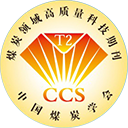Abstract:
At present, the dust concentration sensors of the light scattering method in underground coal mines have problems such as easy clogging of the dust extraction pipeline, easy contamination of the detection window and difficult maintenance. In order to solve the problems, an open dust concentration detection structure based on light scattering method was proposed. An open dust concentration sensor based on the light scattering method was designed, which was composed of laser source, photodiode, filter cap and signal processing circuit, etc. In order to ensure the detection accuracy, the influence of ambient light and wind speed on the output results of the sensor was studied. A dynamic differential algorithm and wind speed compensation algorithm were designed to eliminate the influence of ambient light and wind speed. The initial value of the analog -to-digital conversion detected by the open dust concentration sensor using the light scattering method had a good positive correlation with the actual dust concentration. A mathematical model was established between the initial value of analog-todigital conversion detected by an open dust concentration sensor using the light scattering method and the dust concentration, achieving accurate characterization of the dust concentration. Finally, it was experimentally proven that the open dust concentration sensor using light scattering method had high detection accuracy for dust concentration, with a detection error of less than 10%.



 下载:
下载: